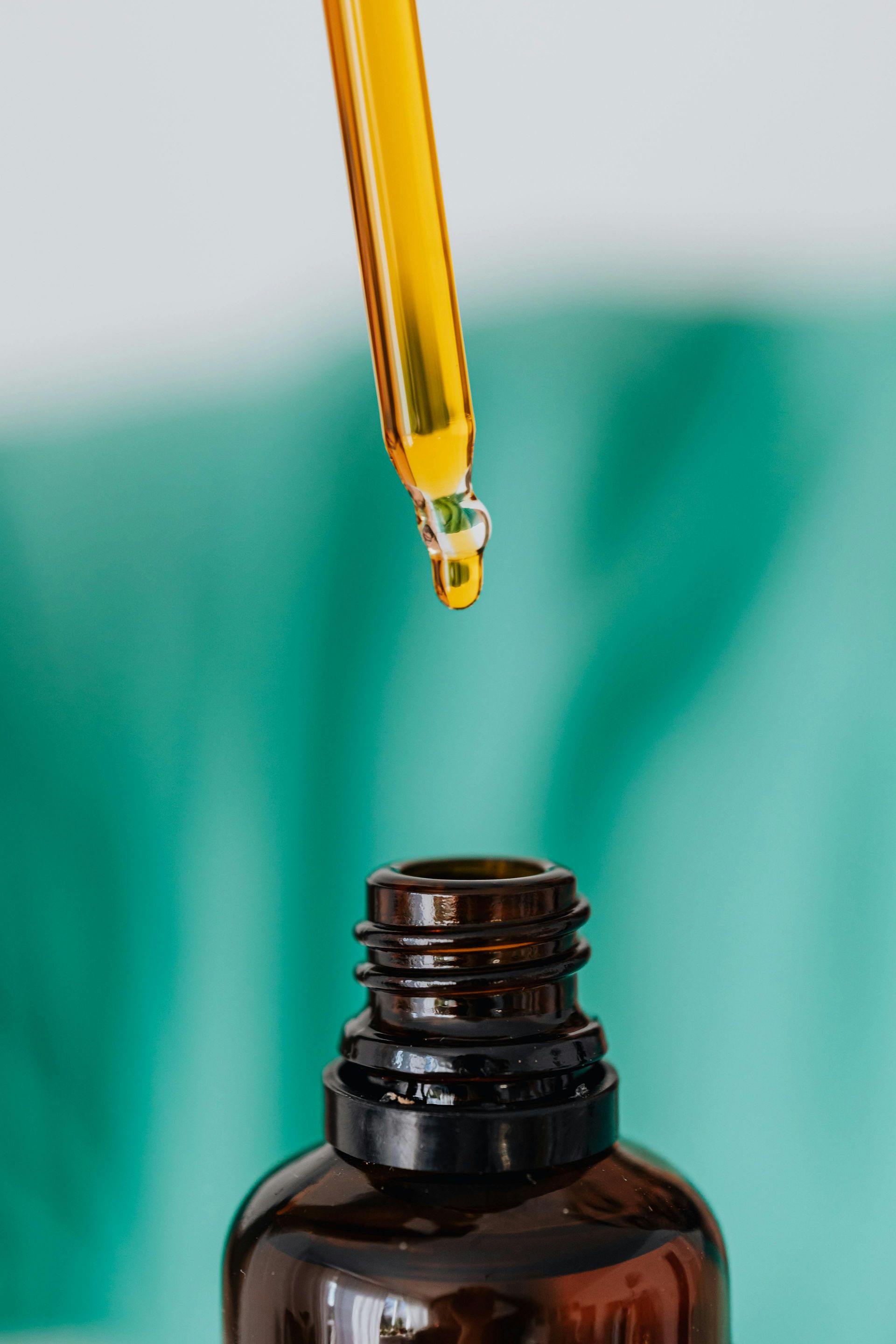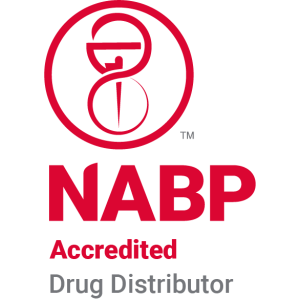Managing hemophilia with IV infusion
Understanding the Role of IV Infusion in Hemophilia Management
Hemophilia, a lifelong bleeding disorder caused by a deficiency in clotting factors, requires comprehensive management strategies. Central to these strategies is the use of intravenous (IV) infusion therapies, which provide targeted replacement of missing clotting factors to control and prevent bleeding episodes. This article explores the essential role of IV infusion in hemophilia care, recent advancements, and practical insights into effective management.
The Foundation of Hemophilia Treatment: Replacement Therapy via IV Infusion
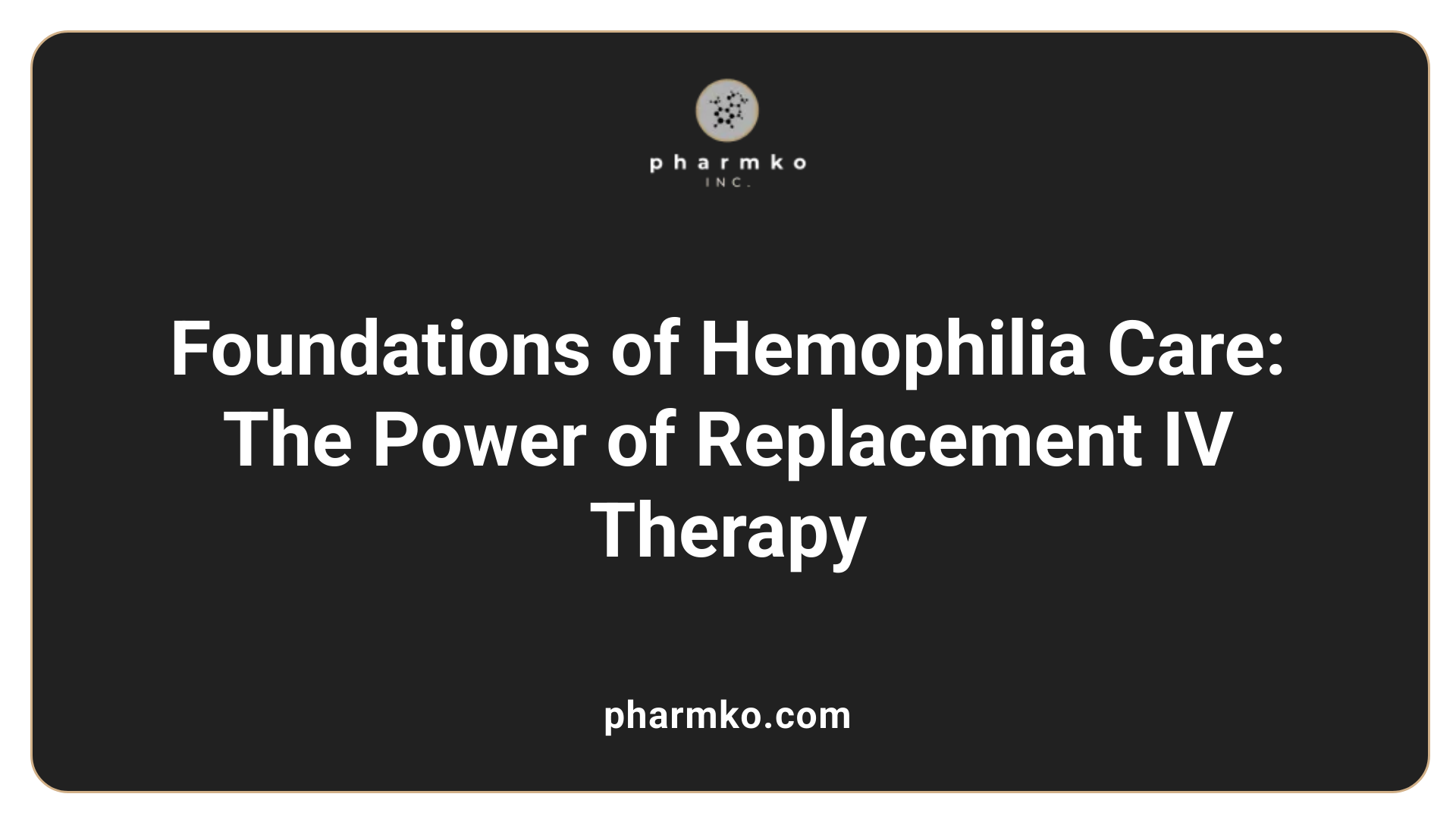
What is the standard treatment for hemophilia?
The main approach to managing hemophilia involves replacing the missing blood clotting factors through intravenous (IV) infusions. This method is essential because hemophilia is caused by a deficiency in clotting factors VIII (hemophilia A) or IX (hemophilia B). To maintain proper blood clotting, patients receive regular infusions of clotting factor concentrates. These treatments can be scheduled prophylactically or administered on-demand during bleeding episodes.
Prophylactic therapy aims to prevent bleeding and long-term joint damage by maintaining adequate factor levels, often given two to three times weekly. In contrast, demand therapy, or on-demand treatment, involves infusing clotting factors immediately after bleeding begins to control the bleeding. The choice of treatment depends on the severity of hemophilia, activity level, and individual response.
Recent advances include long-acting factor products that extend the time between infusions, helping improve convenience and adherence. Overall, this replacement therapy has transformed hemophilia care from reactive to preventive, significantly reducing complication risks.
Process of administering clotting factors
Administering clotting factors via IV infusion involves carefully calculated doses based on the patient's weight and the severity of bleeding. Healthcare providers teach patients and caregivers how to perform these infusions safely at home after proper training.
The process starts with preparing the medication, ensuring it is properly reconstituted, and then inserting a small catheter or butterfly needle into a vein, most often in the arm or hand. Using sterile technique, the concentrate is slowly infused into the bloodstream over minutes. This allows the clotting factors to circulate rapidly, helping to control bleeding or prevent it.
The dosing targets specific activity levels: around 30-50% for minor bleeds, and 50-100% for severe or life-threatening hemorrhages. The amount infused is determined using formulas that consider the patient's weight and desired activity increase.
In recent years, new therapies such as extended half-life products and gene treatments aim to reduce infusion frequency and improve patient quality of life. Routine monitoring and communication with specialized hemophilia treatment centers (HTCs) ensure safe and effective therapy administration.
| Treatment Aspect | Description | Additional Notes |
|---|---|---|
| Standard treatment | Regular IV infusions of factor concentrates | Usually 2-3 times weekly for prophylaxis |
| How it’s done | Using sterile technique into a vein | Training required for home infusions |
| Target levels | 30-50% for minor bleeds, 50-100% for severe | Calculated based on weight and bleeding severity |
| Types of products | Plasma-derived or recombinant factor concentrates | Safer, with recombinant options reducing infection risks |
| Advances | Long-acting factors, gene therapy | Extend dosing intervals and potentially cure |
This structured approach ensures that individuals with hemophilia can effectively manage their condition, minimize bleeding episodes, and enhance their overall quality of life.
Types of IV Clotting Factor Products and Their Safety Measures

What are typical treatments for hemophilia to help cope with the condition?
The main approach to managing hemophilia involves replacing the missing blood clotting factors to enable proper blood clotting. For hemophilia A, which is caused by a deficiency of factor VIII, and hemophilia B, due to a lack of factor IX, treatment predominantly consists of intravenous infusions of clotting factor concentrates.
Patients often receive these concentrates regularly as a preventive measure (prophylaxis) or during bleeding episodes (episodic treatment). Prophylactic therapy helps reduce joint damage and minimizes bleeding risk, often administered two to three times per week.
In mild cases, medications like desmopressin (DDAVP) can temporarily release stored clotting factors, decreasing bleeding tendencies. Additional treatments include antifibrinolytic drugs such as tranexamic acid, which help stabilize blood clots.
Recent therapeutic advancements include novel agents like emicizumab (Hemlibra), a monoclonal antibody that mimics the function of factor VIII. It provides long-lasting protection and is administered subcutaneously, reducing the need for frequent infusions.
Lifestyle and supportive care, including physical therapy, injury prevention, and patient education, are also important components of comprehensive hemophilia management.
What is the process for administering Factor VIII for hemophilia?
Administering factor VIII involves an intravenous “push” or infusion directly into a vein. The process begins with calculating the dose based on body weight and the severity of bleeding or prophylactic needs.
Commercially available factor VIII concentrates are formulated either from pooled human plasma through processes incorporating viral inactivation steps or through recombinant DNA technology, offering high safety and purity.
Before infusion, patients or their caregivers are trained by healthcare providers from specialized centers to ensure safe and effective administration. The medication is typically prepared in advance, stored properly, and infused using sterile techniques.
During treatment, patients are monitored for potential adverse reactions, including allergic responses or development of inhibitors, which are antibodies that attack the infused factor. For some patients, gene therapies like Roctavian offer a one-time treatment that introduces a functional gene, aiming to increase endogenous production of factor VIII and provide long-term symptom control.
Overall, the management of hemophilia with factor VIII therapy requires precise dosing, vigilant monitoring, and personalized care plans, usually coordinated by a multidisciplinary team in a hemophilia treatment center.
Advancements in Hemophilia Therapy: Long-Acting Factors and Gene Innovations
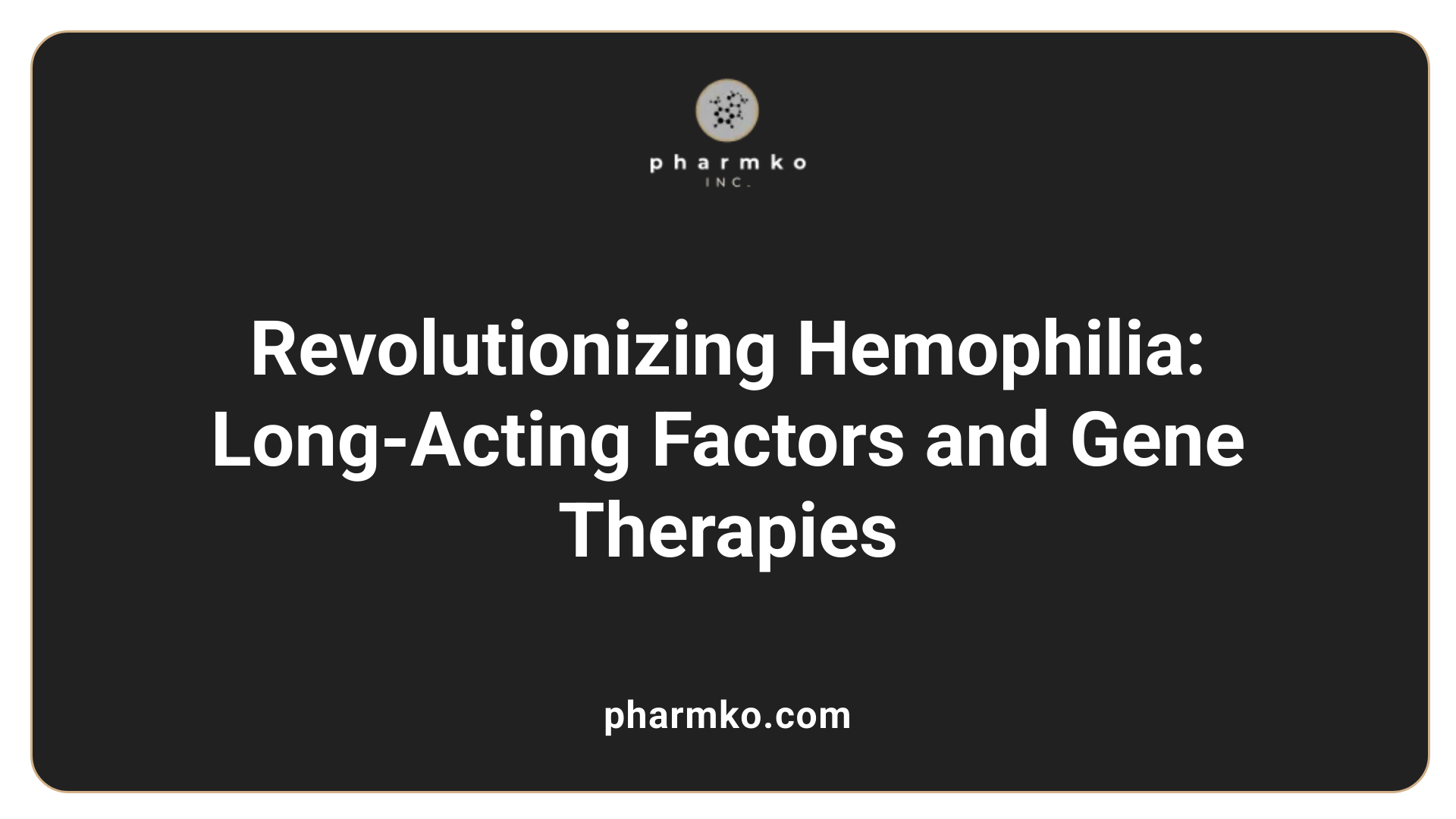
Are there recent advancements or new treatments available for hemophilia?
Recent developments in hemophilia care focus on creating longer-lasting treatments that reduce the frequency of infusions, making management more convenient. New products such as extended half-life (EHL) clotting factors, which last longer in the bloodstream, allow patients to infuse less often—typically once a week or even less frequently.
In addition, non-factor therapies like Emicizumab (Hemlibra) have revolutionized treatment options for hemophilia A. Administered subcutaneously, Emicizumab mimics the function of factor VIII and provides protection against bleeding with less frequent dosing schedules, often weekly or monthly. These advancements improve quality of life by reducing treatment burden and offering more consistent bleeding protection.
Despite remarkable progress, research is ongoing. New therapies aim to provide even greater efficacy, easier administration, and accessibility. Overall, these landmark improvements represent a significant leap forward in hemophilia management, helping patients lead healthier lives.
What are some of the innovative treatments in development for hemophilia?
The horizon of hemophilia treatment includes exciting breakthroughs in gene therapy. Drugs like Roctavian and Hemgenix are designed to deliver functional copies of the defective genes responsible for clotting factors VIII and IX. These therapies are given as a one-time IV infusion and have shown promising results in reducing or even eliminating the need for frequent clotting factor infusions.
Gene therapy holds the potential to offer a cure or long-term remission in many cases, significantly decreasing the physical and mental burdens of daily treatment routines.
In addition to gene therapy, other innovative approaches include bispecific antibodies such as Emicizumab, which bridge the deficient factor VIII function and sustain hemostasis. Fitusiran, an siRNA-based drug in phase three trials, targets natural anticoagulants like antithrombin to rebalance the coagulation system, improving bleeding outcomes.
These emerging treatments showcase a future where hemophilia management could become more effective and less intrusive—potentially transforming lives globally.
| Treatment Type | Description | Notable Examples | Potential Benefits |
|---|---|---|---|
| Long-Acting Factors | Extended half-life products reducing infusion frequency | Efmoroctocog alfa, Rurioctocog alfa pegol | Fewer infusions, better adherence |
| Gene Therapy | Single infusion to promote endogenous factor production | Roctavian, Hemgenix | Long-term or possible cure |
| Bispecific Antibodies | Mimic factor VIII function with long-lasting effects | Emicizumab | Reduced bleed frequency, convenience |
| RNA-based Therapies | Rebalance coagulation pathways | Fitusiran | Improved bleeding control |
As research progresses, the landscape of hemophilia treatment continues to evolve, offering hope for more durable, effective, and patient-friendly options.
Comprehensive Management: Integrating IV Infusion with a Holistic Approach
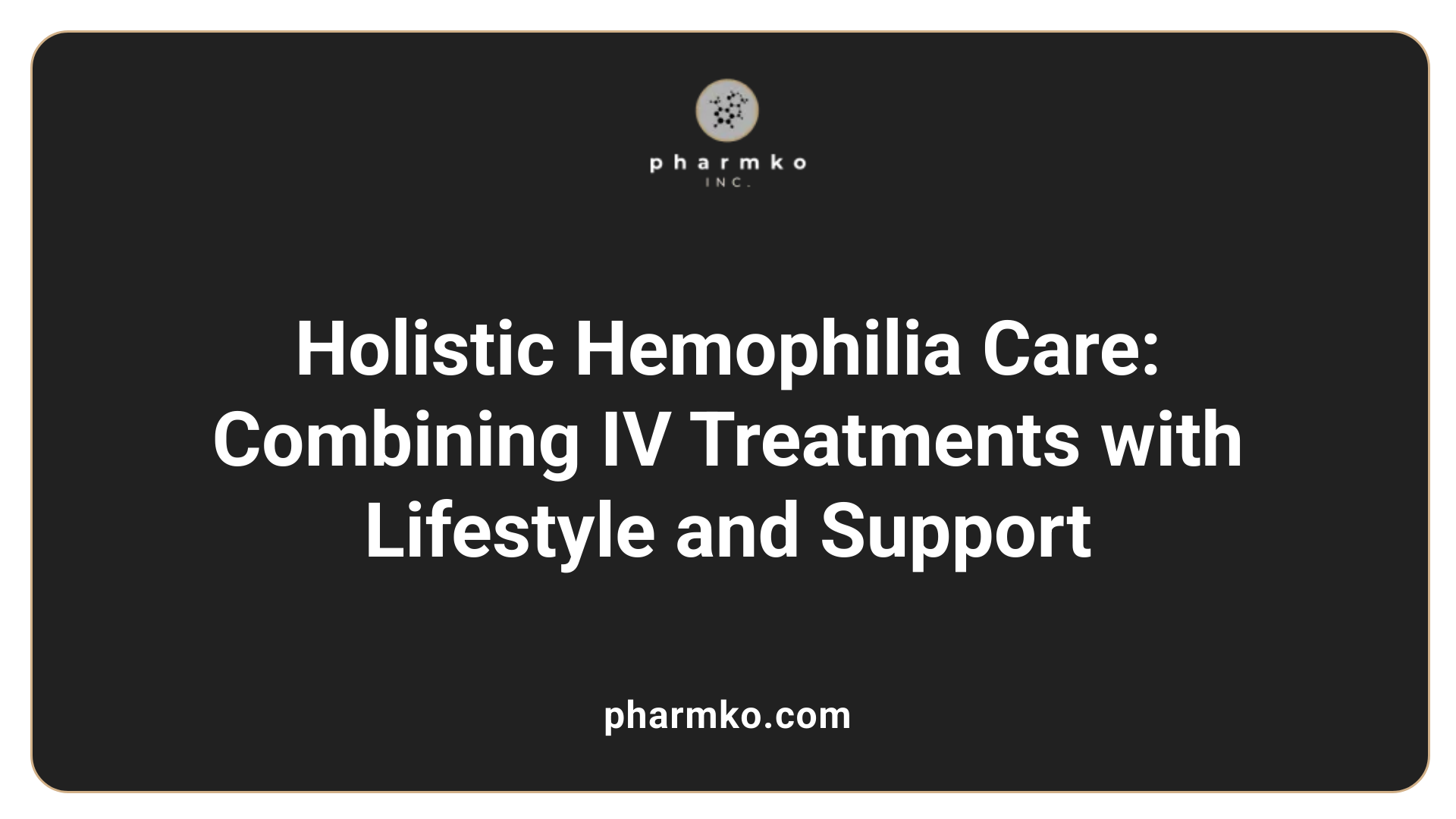
What are typical treatments for hemophilia to help cope with the condition?
Managing hemophilia involves replacing the missing clotting factors through intravenous infusions, which are essential for controlling and preventing bleeding episodes. Patients with hemophilia A receive factor VIII concentrates, while those with hemophilia B are treated with factor IX concentrates. These can be administered in medical facilities or at home, often after proper training to enable self-care. For mild cases, desmopressin (DDAVP) can temporarily boost the body’s production of clotting factors, especially FVIII, and is useful during minor bleeding or upcoming procedures.
In addition to factor replacement, other treatments play supportive roles. Antifibrinolytic drugs such as tranexamic acid help stabilize blood clots, especially during dental work or mild hemorrhages. Novel therapies like emicizumab, a monoclonal antibody administered subcutaneously, mimic the function of factor VIII to prevent bleeding, offering less frequent dosing and reducing treatment burden.
Alongside medical interventions, lifestyle adjustments are crucial. Patients are encouraged to avoid contact sports and activities that risk injury, practice good dental hygiene to reduce bleeding risk, and wear medical ID bracelets to alert caregivers in emergencies. Regular physical therapy helps maintain joint health, improve flexibility, and minimize joint damage resulting from recurrent bleeds.
How do hemophilia treatment centers contribute to better outcomes?
Hemophilia Treatment Centers (HTCs) are specialized clinics that deliver comprehensive, multidisciplinary care tailored to individual needs. These centers coordinate among hematologists, nurses, physical therapists, social workers, and other specialists to provide ongoing management and education.
HTCs facilitate routine assessments, ensuring that patients maintain appropriate clotting factor levels, especially through prophylactic therapy aimed at preventing bleeding before it occurs. They also teach proper infusion techniques for home therapy, empowering patients and families to manage treatment confidently.
Research shows that patients under HTC care experience fewer emergency room visits, face a lower risk of joint damage, and show better adherence to treatment regimens. These outcomes result from the center's ability to oversee personalized treatment plans, monitor for complications like inhibitor development, and introduce emerging therapies. Overall, HTC management not only improves health outcomes but also enhances the quality of life for individuals with hemophilia.
Additional insights and management practices
For effective hemophilia management, regular monitoring of inhibitor development, joint health, and overall well-being is essential. This includes periodic blood tests and musculoskeletal ultrasound for early detection of bleeding complications.
Educational resources provided by HTCs and organizations like the National Hemophilia Foundation support patients in understanding their condition and treatment options. Developing personalized care plans, including home infusion schedules and safety protocols, is fundamental.
By integrating infusion therapies with physical rehabilitation, lifestyle modifications, and ongoing education, patients can lead more active and healthier lives despite their condition.
| Aspect | Approach | Benefits / Details |
|---|---|---|
| Treatment Method | IV clotting factor infusion | Replaces missing factors to control bleeding |
| Therapeutic Innovations | Emicizumab, gene therapy, extended half-life products | Reduce infusion frequency and improve quality of life |
| Supportive Measures | Physical therapy, lifestyle changes | Improve joint health, reduce injury risks |
| Monitoring & Education | Regular assessments at HTCs | Prevent complications, enhance adherence |
| Common Medications | Factor concentrates, DDAVP, antifibrinolytics | Manage bleeding episodes and minimize damage |
Patient Education and Self-Management Techniques

How do you train for self-infusion at home?
Self-infusion is a vital skill for many people with hemophilia, especially for children and those needing frequent treatment. Patients and their families receive hands-on training from healthcare professionals at Hemophilia Treatment Centers (HTCs). This training covers how to properly access veins, prepare clotting factor concentrates, and administer infusions safely. Education on storage, handling, and disposal of medications is also essential.
To assist with ongoing management, patients often use educational resources like treatment worksheets, infusion logs, and instructional videos. These tools reinforce correct techniques, help record doses, and monitor reactions or inhibitor development. Proper training and resource use empower patients and caregivers to manage bleeds promptly and effectively, reducing the need for hospital visits.
Monitoring for infusion reactions
After infusing clotting factors at home, it’s important to watch for signs of adverse reactions. Common reactions include allergic responses, infusion site swelling or pain, and in rare cases, more severe reactions like anaphylaxis. Patients should be instructed to observe for symptoms such as hives, difficulty breathing, fever, or unusual swelling.
In case of reaction signs, stopping the infusion and seeking medical attention immediately is critical. Regular communication with the HTC ensures follow-up, and in some cases, premedication or alternative infusion techniques may be recommended to reduce risks.
Use of treatment journals and educational tools
Keeping a treatment journal or logbook is a helpful way to track infusion Details, bleeding episodes, and reactions. Patients record the date, time, dose, and any symptoms experienced. This information guides healthcare providers in adjusting treatment plans.
Educational tools like personalized worksheets, instructional videos, and mobile apps can enhance understanding and ensure adherence to protocols. These resources support confidence in self-management, helping patients maintain independence and improve their overall quality of life.
Summary and Future Directions in Hemophilia IV Therapy
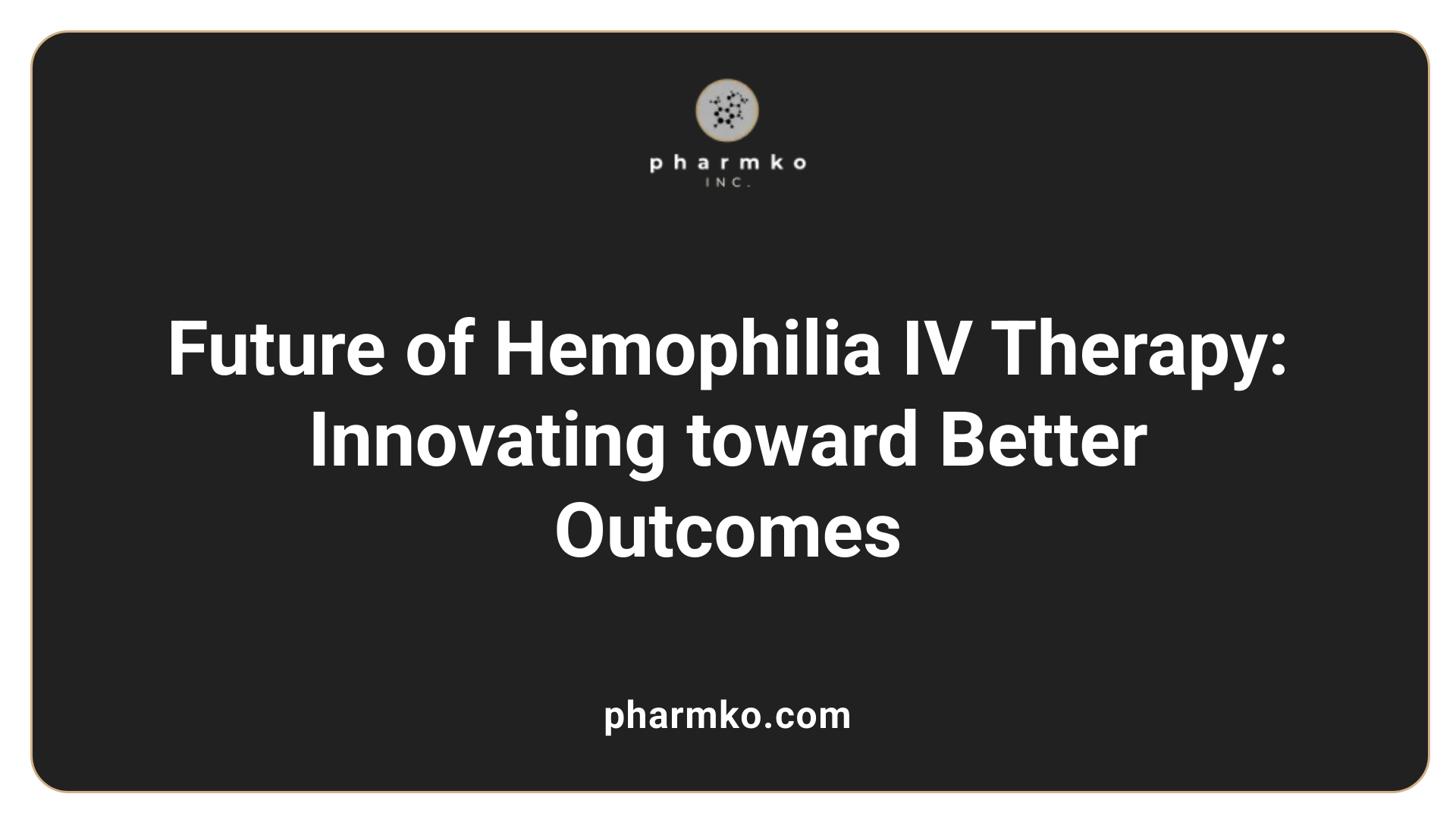
What is the standard treatment for hemophilia?
The main approach to treating hemophilia involves replacing the missing blood clotting factors through intravenous (IV) infusions of clotting factor concentrates. Patients typically receive prophylactic treatment, which involves regular infusions several times a week to maintain adequate levels of clotting factors and prevent bleeding episodes. Advances in medication formulations, especially long-acting coagulation factors, have allowed for extended intervals between infusions, making treatment more manageable.
Are there recent advancements or new treatments available for hemophilia?
Recent innovations in hemophilia therapy have significantly improved patient care. The development of long-acting clotting factors now permits less frequent dosing, increasing convenience and adherence. Additionally, non-factor therapies like Emicizumab — a bispecific antibody that mimics factor VIII activity — can be administered subcutaneously weekly, biweekly, or monthly, reducing the treatment burden.
Ongoing research is exploring further options such as gene therapies and novel drugs like Fitusiran, which suppresses natural anticoagulants to boost clot formation. Other investigational therapies aim to extend the half-life of clotting proteins, provide alternative routes of administration such as subcutaneous injections, and potentially cure or dramatically reduce the severity of hemophilia.
The importance of personalized treatment plans
Customizing therapy to each individual’s needs is essential for optimal management. Factors such as hemophilia severity, activity levels, and future medical procedures influence treatment choices. The emergence of tailored options, including gene therapy and extended half-life products, enables healthcare providers to craft plans that enhance efficacy, safety, and the patients’ overall quality of life.
In conclusion, advances in both factor-based and non-factor therapies are transforming hemophilia care. Continuous research and development are expected to produce even more effective, less invasive, and longer-lasting treatments, offering hope for improved long-term outcomes.
| Therapy Type | Description | Advantages | Future Potential |
|---|---|---|---|
| Long-acting clotting factors | Modified factors with extended half-lives | Fewer infusions, better adherence | Improved formulations, less frequent dosing |
| Non-factor therapies | Emicizumab, Fitusiran, others | Subcutaneous, convenient | Potential cures, broader patient access |
| Gene therapy | Viral vector-based gene delivery | One or two treatments, possible long-term cure | Ongoing trials, promising results |
| Personalized regimens | Tailored approaches based on patient needs | Optimized dosing, minimized risks | Custom therapies, better outcomes |
Staying informed on these evolving treatments allows patients and healthcare providers to make better decisions and ultimately improve the quality of life for those with hemophilia.
Advancing Hemophilia Care via Innovative IV Strategies
The management of hemophilia through IV infusion remains a cornerstone of treatment. As research yields longer-lasting clotting factors, minimally invasive gene therapies, and innovative antibody-based treatments, patients benefit from reduced treatment burdens and improved quality of life. Proper training for self-infusion, regular follow-up at specialized centers, and a personalized approach to therapy ensure that individuals with hemophilia live active, healthier lives. Continued advancements promise a future where bleeding episodes are minimized, and the overall disease burden is significantly alleviated.
References
- Treatment of Hemophilia
- Treatment of Hemophilia A and B
- My Infusion Kit - Bleeding Disorders
- PROTOCOLS FOR THE TREATMENT OF HEMOPHILIA AND ...
- How Is Hemophilia Treated?
- The use of continuous infusion of factor concentrates in ...
- New, lifechanging hemophilia treatments improve patients ...
- 6Home Infusion



